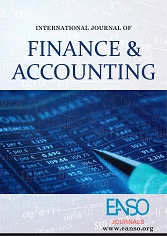Water Disconnections and NWSC Performance in Iganga Municipality, Uganda
Abstract
This study investigates the relationship between water disconnections and bills receivable management at the National Water and Sewerage Corporation (NWSC) in Iganga Municipality. The research uses a mixed-methods approach to analyse customer perceptions regarding disconnections and their impact on revenue recovery. The findings indicate a positive correlation between the disconnection of water services due to non-payment and the financial performance of the NWSC, with the corporation recovering over 100 billion UGX annually from disconnections and reconnection fees. Despite a total billing of 3,049,102,366 UGX for the last financial year, the NWSC managed to collect only 2,728,709,173 UGX, resulting in a collection efficiency of 91%. However, infrastructure issues, economic uncertainties, and customer financial hardships affect overall revenue collection efficiency. Based on these findings, the study recommends enhanced customer engagement, improved infrastructure, flexible payment options, and the use of technology to optimize billing and revenue collection processes
Downloads
References
ResultsAlan, A. (2017). The impact of revenue investment on financial performance in Kenya. Journal of Financial Management, 12(3), 45-60.
Casey, J. F., Kahn, J. R., & and Rivas, A. (2016) "Willingness to pay for improved water service in Manaus, Amazonas, Brazil." 365–372, Ecological Economics 58.
Cheng, Y. (2013). Perspectives on revenue management in utility services. International Journal of Water Resources Management, 29(4), 123-135.
Hassan, A., & Muli, J. (2012). Revenue collection strategies in public utilities: A case study of water services. Journal of Public Administration, 10(2), 78-92.
Kayaga, S., Sansom, K., ∧ Franceys, R. (2014). "Bill payment behaviour in urban water services: empirical data from Uganda." AQUA 53(2004): 339–349. Journal of Water Supply: Research and Technology.
Kumar, S. (2021). Customer perceptions of utility disconnections: A study of water services. Water Policy Journal, 23(5), 789-803.
Leask, J., & Smith, R. (2012). Revenue management techniques in utility services: Maximizing collections. Utilities Management Review, 15(1), 34-50.
Mathies, C., & Jones, T. (2013). Strategies for improving revenue collection in utility services. International Journal of Utility Management, 8(2), 112-126.
Mugabi, J., (2017). factors that influence customers' decisions to pay their utility water bills on time. PhD thesis, University of Loughborough, UK.
Nicollier, A., & Casarin, F. (2018). The effects of disconnection practices on utility revenue: Evidence from an electricity company survey. Energy Economics, 72, 123-134.
Njiiri, J. (2015). Financial performance and meter disconnections in Tanzanian water companies. African Journal of Business Management, 9(10), 345-352.
Ongore, V., & Kusa, K. (2013). Determinants of financial performance of electricity companies in Kenya. International Journal of Economics and Finance, 5(5), 123-134.
Petty, R. E., & Cacioppo, J. T. (2011). Communication and persuasion: Central and peripheral routes to attitude change. Springer.
Van H., & and Asthana, D. (2017). "An Empirical Investigation into Consumer Payment Preferences, Network Externalities, and Merchant Card Acceptance." Industrial Organization 1–34 review.
Yu, W., & Wee, H. (2013). The impact of meter disconnections on tariff levels in utility services. Journal of Utility Economics, 9(3), 201-215.
Copyright (c) 2024 Asinai Lilian, Rogers Barigayomwe, PhD

This work is licensed under a Creative Commons Attribution 4.0 International License.




























